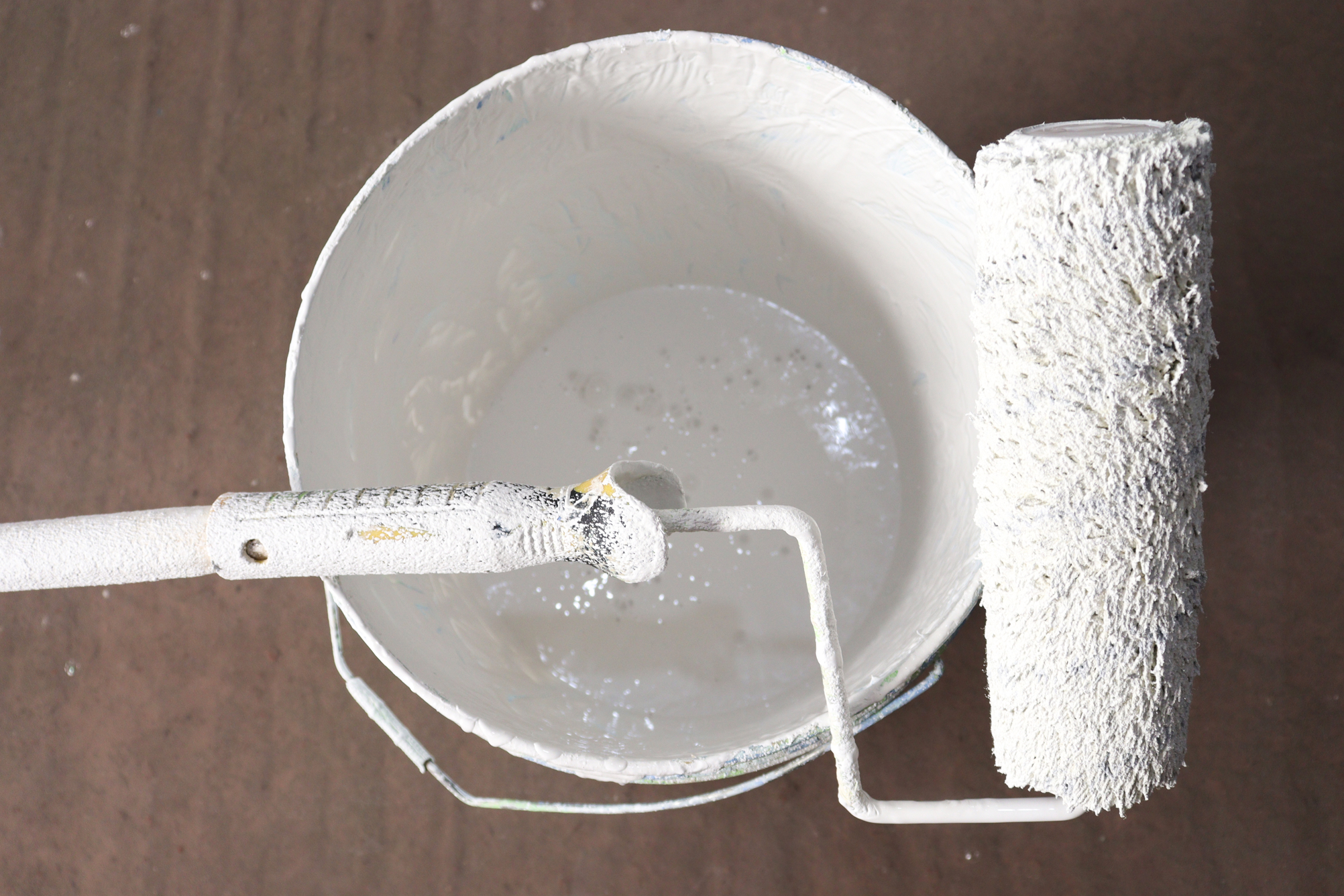This Commercial Decorating project includes the painting of communal areas, corridors and selected laboratory spaces. The main goal was to freshen up the building efficiently and professionally.
Limewashing is an ancient tradition – it’s one of the oldest paints known to man, used in ancient Egypt and Rome thousands of years ago, but also still used to this day. Throughout history, limewashing was a cheap and effective way of painting houses. It’s breathable and long-lasting, and also possesses some antibacterial insecticidal properties.
Limewash was also used so frequently because of its fireproofing properties – after the Great Fire of London in 1212, King John decreed that all houses on the Thames must be covered with lime paint. It was also thought to make stone buildings stronger, filling cracks in rocks and weatherproofing the structure.
Nowadays, limewash is mostly used to paint exteriors, often with a dye added to give it a tint of colour. While its use is uncommon in modern times, it’s making a slight comeback due to its vintage, rustic vibe.
If you’re planning on using limewash in your project, you need to know how to properly make use of it – here’s a short guide on safe application of limewash that should help you out:
Why even use limewash?
While you might think that people nowadays only use limewash for its hipster flair, there’s a little more to it. Some types of wall constructions are built in a way that keeps a certain level of moisture inside of it. If that moisture doesn’t find a way to escape, it might cause decay in the future.
To get rid of that moisture, we must rely on the surface material, such as paint, to be permeable. Some types of modern paint and most available mortars are not permeable, which could lead to structural damage in some walls after a time. To avoid that, a lot of people use limewash.
Limewash is one of the most permeable materials available for finishing walls – tested through thousands of years by people from all over the world. It’s useful and looks great – why not use it?
Why is it difficult working with limewash?
As you can imagine, limewash isn’t an all-around solution to exterior painting – as you can see by how infrequently it’s actually used nowadays. Without additives, limewash is very simple and easy to make – it’s only slaked lime (calcium hydroxide) and water. After applying the mixture, limewash combines with the carbon dioxide in air to form calcium carbonate through a process known as carbonation.
Unfortunately, carbonation is an excruciatingly long process. As the limewash can’t dry too quickly, it’s required to apply one coat per day until the end. What’s more, weather conditions need to be almost perfect for your whitewashing to be successful – strong wind, strong direct sunlight and heavy rain could destroy the whole process.
Thankfully, there are ways to safely and effectively work with limewash in modern times.

Working with limewash and achieving success
First of all, you need to take care of the weather conditions – if you can’t be sure that the weather will stay relatively clear for the whole process, make adequate preparations to cover the area.
Limewash nowadays is primarily used for walls made out of porous materials, such as clay bricks or stone. While it can be effectively used for wood, we don’t recommend it to beginners – you might end up with a huge mess and ruined wood. Wooden walls and objects need to be properly prepared before limewashing, which includes removing any existing finishes like varnish or wax.
Don’t forget to apply one coat per day, and don’t make it too thick – as the process of carbonation progresses, the coat of limewash will get more and more opaque. Because uncarbonated limewash looks much more transparent, first-time users tend to overuse it. If you paint a coat that is too thick, or start painting another layer too soon, the limewash might end up flaking and falling off.
Modern lime paints come with everything pre-assembled, so there is no need to add water or any other additives. Make sure to give the paint a good stir before you start painting, until you can’t tell different paint components apart. You should also repeat stirring every ten to fifteen minutes during painting to avoid lime separating from water.
Staying safe near limewash
It’s important to remember that limewash is alkaline and should be kept away from the eyes – in case some gets into your eyes, wash them carefully with warm water or use eyewash. If the discomfort isn’t stopping after some time, you should swiftly visit a doctor. Use of protective glasses is heavily advised.
It’s also a bad idea to get limewash on your skin – it can quickly dry it out, which is why gloves are necessary when working with lime putty. Thankfully, calcium hydroxide and calcium carbonate do not create harmful vapours, so you won’t need a paint respirator.
While not a danger in itself, working with limewash can get messy – even when fully carbonated, limewash tends to rub off on clothes, so avoid using it in tightly packed areas. In case of splashes during painting, make sure to clean up swiftly, as limewash can be difficult to remove from some materials after it cures.
Need help applying limewash? Why not let professionals take care of it – here at Ignas, we know how to properly work with limewash to create a beautiful rustic visual effect, perfect for backyard areas or if you want a farmyard vibe at home. Contact us today for a free quote!

Follow us
Blog
Painters and Decorators – A Night-Time Transformation for Enigma in Holborn
Night projects are a different world. They require not only precise planning, but also a team that can work fast, quietly, and efficiently. One of our most recent commercial projects was for Enigma in Holborn – an intense, artistic transformation completed entirely during the night.
Professional Painters and Decorators – My Experience Working in Art Galleries
When people think of professional painters and decorators, they often imagine residential interiors or commercial offices. But painting an art gallery is a world of its own – and it’s something I’ve grown to understand deeply over the years.





